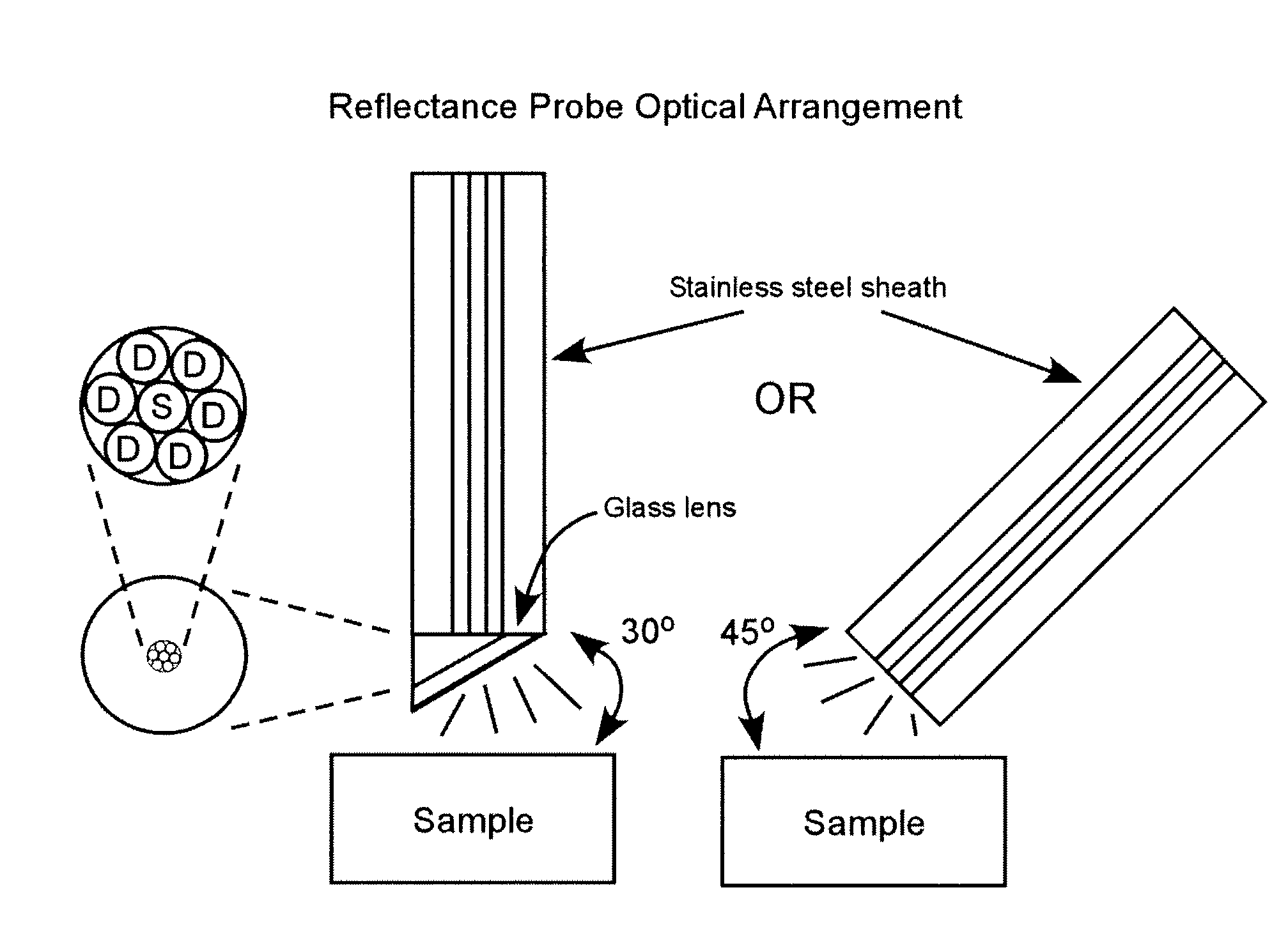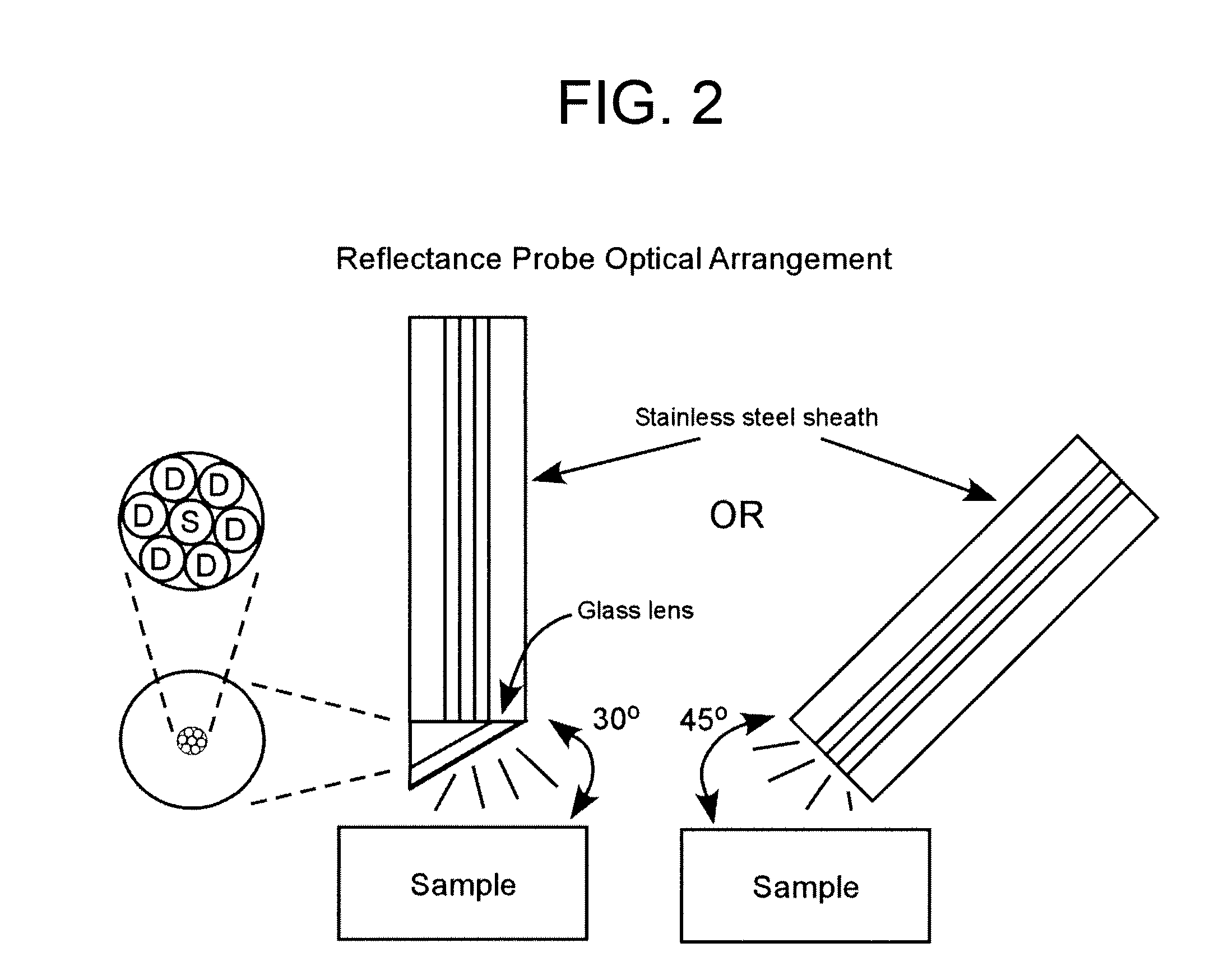Detecting microorganisms in blood utilizing physical and chemical changes in blood
a technology of microorganisms and blood, applied in the field of detecting microorganisms in blood utilizing, can solve the problems of not yielding clinical information and commercially employed approaches, and achieve the effect of improving statistical analysis and greater detection sensitivity
- Summary
- Abstract
- Description
- Claims
- Application Information
AI Technical Summary
Benefits of technology
Problems solved by technology
Method used
Image
Examples
case study i
[0207]FIG. 25 contrasts microbial growth with the decay of platelet and leukocyte populations for venous blood using the reference data shown in FIG. 24 (10 mL blood; ppO2=30 nm hg; ppCO2=50 mmHg). Both the parameter values selected and the cell densities are typical of what is encountered in practical situations. The doubling time for the microorganism is within the range of aerobic bacteria grown in nutrient rich media. FIG. 26 shows the fractional consumption of oxygen by each of the cell populations.
[0208]The respiration of white blood cells and platelets initially dominate the O2 consumption causing a corresponding decrease in the oxygen partial pressure. Note that although platelets are more numerous, the specific respiration rate of the white blood cells is such that the oxygen consumption is approximately the same for each population. The microorganisms are the most active population with a relatively high metabolic rate and have continuously increasing numbers. The microbia...
case study ii
[0211]The volume of blood inoculated into the blood culture bottles constitutes an important parameter for two reasons. For the low pathogen numbers, an increase in the blood volume leads to a higher likelihood that the sample contains the pathogen. From the measurement sensitivity point of view, different blood volumes result in different distributions of oxygen and carbon dioxide between the liquid and vapor phases. Since the liquid phase acts as a capacitor for CO2 and the vapor phase acts as a capacitor for O2, changes in the amount of blood injected can be expected to affect the partial pressure of O2. The optimal sample has the largest concentration of microorganisms in the smallest blood volume.
[0212]The effect of the addition of different volumes of blood (for example, 2, 5, 10, and 20 mL; ppO2=30 mmHg, ppCO2=50 mmHg) on the O2 and CO2 partial pressures is shown in FIG. 30. As the volume of blood increases, not only do the partial pressures increase substantially, but the ba...
case study iii
[0214]When blood culture detection systems are based only on the production of CO2 as a measure of microbial growth, the respiration of other cells (e.g., leukocytes and platelets) may become a confounding factor, especially if it results in a false positive culture. This is of particular importance in the case of leukemic patients who have elevated concentrations of leukocytes. While only the effects of normal respiration are being considered in this case, leukocytes can also react to the presence of pathogens, and are known to generate a respiratory burst in which O2 consumption can increase by 2-3 fold in the process of destroying the microorganisms [Lee, 1999].
[0215]Using the parameters of blood from Case I, FIGS. 32 and 33 illustrate the changes in partial pressures of CO2 and O2 in the headspace of an infected blood culture for both normal (5,000 WBC / μL blood) and elevated leukocyte levels (50,000 and 250,000 WBC / mL blood). It becomes more difficult to uniquely distinguish the...
PUM
| Property | Measurement | Unit |
|---|---|---|
| wavelength-dependent spectra | aaaaa | aaaaa |
| transmittance | aaaaa | aaaaa |
| reflectance | aaaaa | aaaaa |
Abstract
Description
Claims
Application Information
 Login to View More
Login to View More - R&D
- Intellectual Property
- Life Sciences
- Materials
- Tech Scout
- Unparalleled Data Quality
- Higher Quality Content
- 60% Fewer Hallucinations
Browse by: Latest US Patents, China's latest patents, Technical Efficacy Thesaurus, Application Domain, Technology Topic, Popular Technical Reports.
© 2025 PatSnap. All rights reserved.Legal|Privacy policy|Modern Slavery Act Transparency Statement|Sitemap|About US| Contact US: help@patsnap.com



